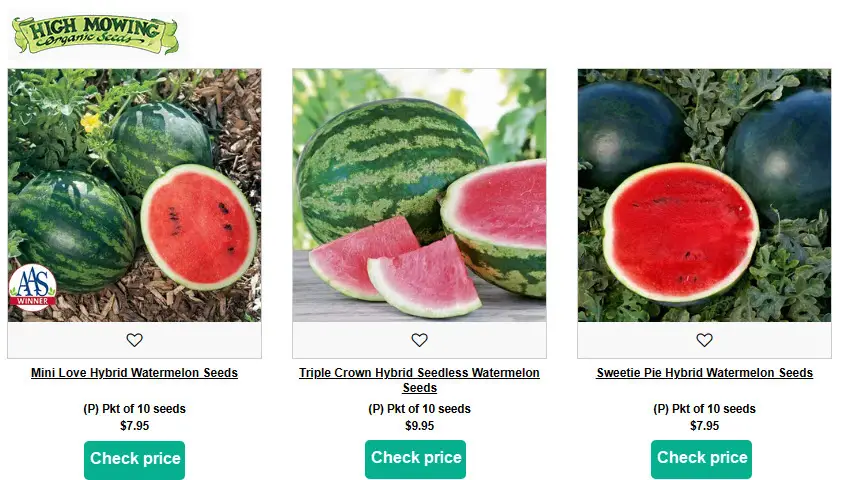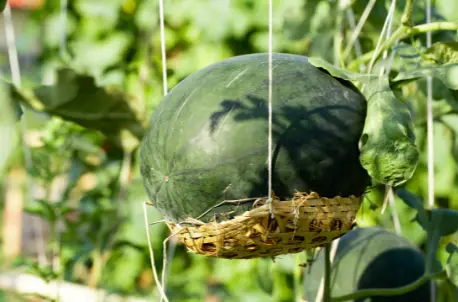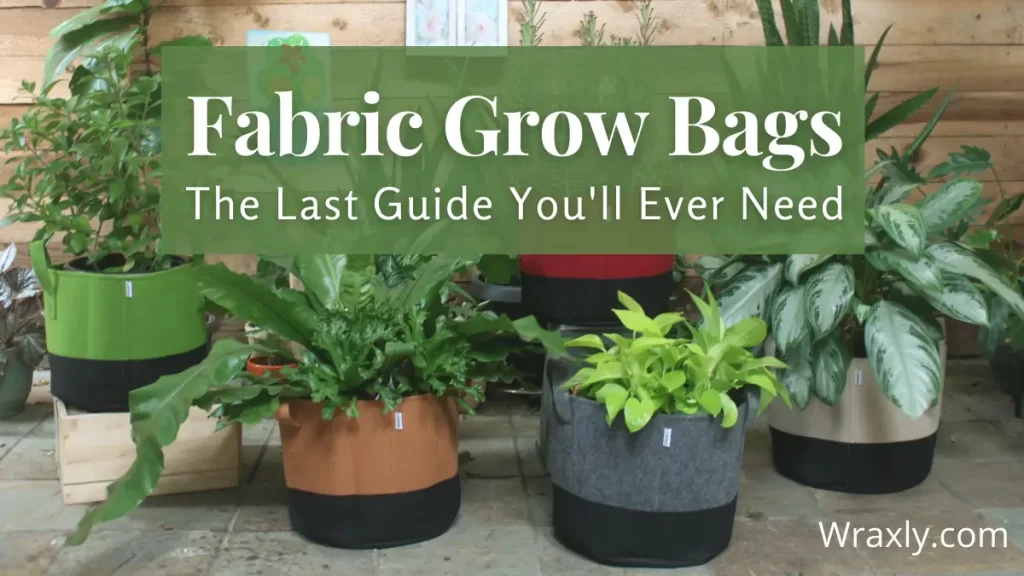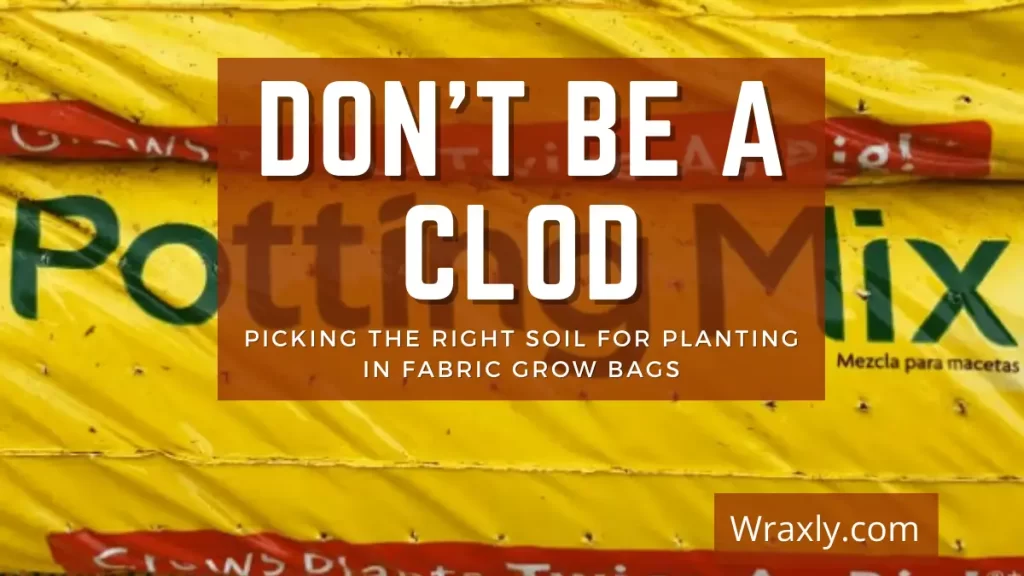Watermelons are a popular fruit, enjoyed by people all over the world. But what if you don’t have a lot of space? Don’t let that stop you from growing this summer favorite. In this post, we’ll share some tips on growing watermelon in grow bags, even if you don’t have a lot of space. So read on to learn more!
![Growing Watermelon in Grow Bags [Complete Guide]](https://wraxly.com/wp-content/uploads/2022/05/Growing-Watermelon-in-Grow-Bags-Complete-Guide-1024x576.webp)
- What are grow bags and why should you use them to grow watermelons?
- What is the right grow bag size for growing watermelons?
- What type of soil should you use to grow watermelons?
- What are the best varieties of watermelon to grow in a grow bag?
- When should you plant watermelons in a grow bag?
- How do you plant watermelons in a grow bag?
- How often do you need to water your watermelons?
- How often do you need to fertilize your watermelons?
- What pests and diseases should you look out for?
- When are watermelons ready to harvest?
- What are the best growing conditions for watermelons?
- Caring for your growing watermelon plants
- Pruning watermelon plants
- Are there any drawbacks to growing watermelon in a grow bag?
- FAQs about growing watermelon in a grow bag
- Final Thoughts on Growing Watermelon in Grow Bags
What are grow bags and why should you use them to grow watermelons?
Grow bags are a type of container that is often used for growing plants, vegetables, and fruit. They are made from a variety of materials, such as plastic, fabric, or coir (coconut fiber). Grow bags have several benefits over other types of containers, such as:
- They are lightweight and easy to move around, so you can put them where they’ll get the most sun
- Grow bags are porous so they allow your plants to breathe and prevent root rot
- They warm up quickly in the sun, so your plants will get a head start on the growing season
- They are affordable and easy to find. You can often find them at your local garden center or online.
Recommended Grow Bags for Watermelons
What is the right grow bag size for growing watermelons?
The best size grow bag for watermelons is at least 7 gallons. But if you have the space, a 10- or 15-gallon grow bag is even better. Why? Watermelons are vigorous growers and can quickly outgrow a small container. Plus, they need a lot of water, so a larger grow bag will help to prevent the roots from drying out.
What type of soil should you use to grow watermelons?
When it comes to growing watermelons, the type of soil you use is important. Watermelons need well-drained, sandy soil that is rich in organic matter. If your soil is heavy or clay-like, it will hold too much water and the roots will rot. Here are some tips for creating a potting mix that your watermelons will love:
- The ideal soil for watermelons is rich, well-aerated, slightly acidic soil with a pH of 6.5 to 7.5 (depending upon variety)
- Before planting, amend the potting mix with compost and a higher nitrogen fertilizer. Chicken manure is an excellent soil mix amendment because it is high in nitrogen. Watermelons like nitrogen-rich soil before flowering so adding chicken manure to your potting mix will give your watermelon plants a boost
- If you’re using a store-bought potting mix, make sure it’s labeled as “well-draining”
- Another option is to use a soilless mix, such as perlite or vermiculite. These mixes are well-drained and rich in nutrients, which is ideal for watermelons

What are the best varieties of watermelon to grow in a grow bag?
There are many different varieties of watermelon, but not all of them are well-suited for growing in a grow bag. When looking for an under-12-pound variety, look for names that often include the word “Baby” or “Midget.” You’ll want to find melons that are known as personal watermelons (weighing no more than 6 pounds) or icebox varieties (no heavier than 12 pounds). Here are some of the best varieties to try:
Golden Midget
A lovely little watermelon that weighs about 3 pounds. It’s simple to tell when they’re ripe, as the rind turns a beautiful golden yellow color when ready for harvest, a very gorgeous contrast with the salmon-pink-colored flesh. The taste is sweet and refreshing. Matures in just 70 days. Needs a larger grow bag (at least 15-gallons).
Bush Sugar Baby
This is an excellent smaller-sized watermelon that is perfect for grow bags. This “icebox” melon has a rich, juicy, and incredibly sweet flavor. Fruit weight is 8-12 pounds. Only 75 days to maturity.
Sugar Baby
This is a small, round watermelon that only weighs about 6 to 8 pounds. It’s perfect for small spaces! The maturity time for this variety is 75 to 80 days. The skin is dark green with no stripes.
Yellow Baby
Grows on compact vines with fruit that are medium-sized, oval, and that weigh no more than five to seven pounds. The skin is striped in light and dark green while the flesh is a bright, sunny yellow. Only 40 days to maturity.
Yellow Doll
This watermelon is small and oval that is strikingly striped in light and dark green. Melons weigh no more than five to seven pounds. The flesh is yellow, of course, with a sweet flavor and a dense texture. The maturity time for this watermelon is 65 to 70 days.
When should you plant watermelons in a grow bag?
The best time to plant watermelons is 2 to 4 weeks after the last frost in your area. Watermelons are a warm-season crop and require temperatures of at least 70 degrees Fahrenheit to thrive. If you plant them too early, they will not produce fruit. If you plant them too late, the fruits will be small or nonexistent.
How do you plant watermelons in a grow bag?
Fill your grow bag with your amended potting mix to within 4 inches of the top of the bag. Sow 6-7 seeds in a single, 1-inch deep hole. Once the watermelons have germinated and are 2-3 inches tall, thin them out to the 3-4 strongest plants per bag. Add a trellis or tomato cage to the bag to support the vines as they grow.
How often do you need to water your watermelons?
Watermelons will need a lot of water, so be sure to water daily. Make sure the soil is always moist. Grow bags dry out quickly so it’s important to check the soil moisture every day. The best way to water your watermelons is with a soaker hose or drip irrigation system.
How often do you need to fertilize your watermelons?
Fertilize your watermelons every 2 weeks with a water-soluble fertilizer with an NPK ratio of 15:15:15. You can reduce the frequency to once a month once the fruits start to form. Liquid fertilizer should be used until the first flowers appear, followed by a slow-release fertilizer with more phosphorus and potassium as fruit development progresses.
What pests and diseases should you look out for?
Pests: Watch for cucumber beetles, aphids, and squash bugs. These pests can carry viral diseases that will harm your watermelon plants.
HANDPICKED RELATED CONTENT: Pest Problem? Explore These Organic Options to Keep Critters Out
Diseases: Watermelons are susceptible to several fungal diseases including powdery mildew, anthracnose, and downy mildew. These diseases are often caused by too much moisture. Make sure to water from below, keeping the leaves dry. Avoid overhead watering as much as possible.
When are watermelons ready to harvest?
The seed packet should give you an estimated number of days till ripe. Mark the date on your calendar and begin to check for ripeness around that date. It is important not to pick the watermelons before they are ripe because they will not ripen after they have been severed from the vine.
It can be tricky to figure out when it is time to pick your watermelon. One way is to look at where the melon connects to the vine. If the flowery tendril is brown or dried out, the melon is ripe. Another way is one my mother-in-law swears by. Check for a big yellow spot. The bigger it is, the riper the melon. There is also the method of listening to the sound the melon makes when you thump on it with your fingers, but I have never had any luck with that technique.
It is best to use a sharp knife and cut the stem close to the watermelon to harvest the fruit.
What are the best growing conditions for watermelons?
Watermelons need full sun, so make sure they are in a spot that gets at least 6-8 hours of sunlight per day. They also need well-drained, loamy soil with a pH of 6.0-6.8. Add organic matter to the soil before planting to help improve drainage.
Caring for your growing watermelon plants
When the plants start to grow, guide the vines vertically on a trellis. Protect small fruits from touching the ground by supporting them with a hammock made out of an old t-shirt or a mesh fruit bag.

Watermelons are thirsty plants so be sure to water them regularly. It is best to water them in the morning so the leaves have time to dry before nightfall.
Pruning watermelon plants
Pruning watermelon plants is not necessary, but it may direct more energy to growing the fruits. If you choose to prune, remove the small vines that grow laterally.
Are there any drawbacks to growing watermelon in a grow bag?
While there are many benefits to growing watermelon in a grow bag, there are a few things to keep in mind. First, grow bags dry out quickly, so you will need to water your plants more often than if they were in the ground. Second, grow bags can get very hot in summer weather. This can cause the fruit to overheat and become sunburned. Be sure to place your grow bag in a shady spot during the hottest part of the day to prevent this from happening. Finally, watermelons can be heavy, so be sure to choose a variety that produces a smaller fruit and use a trellis or tomato cage to support the vines. Keep the fruit off the ground by placing them on a rock or other support.
Tip for getting a sweeter watermelon: Stop watering your watermelons two weeks before your expected harvest date. Stressing your melons will cause them to concentrate sugars in the melon, making them even sweeter.
FAQs about growing watermelon in a grow bag
There are a lot of questions that gardeners with small spaces have about growing watermelons. Here are answers to some of the most commonly asked questions about growing watermelons in grow bags.
Watermelons need a lot of space to grow so the minimum size should be at least 7-gallon. The bigger the better. If you are using a trellis or tomato cage, you can get away with a smaller grow bag, but the plant will produce fewer fruits.
Generally, watermelon roots will grow 8-10 inches deep but will grow deeper if their environment allows.
This will depend on the variety of watermelon you are growing and the size of the grow bag. Generally, you can expect to get 1-3 fruits per plant.
Yes, but it is not recommended. Watermelons need a lot of space to grow and produce fruits. A 5-gallon bucket is too small for a watermelon plant to reach its full potential.
Watermelons are warm-weather plants so you should wait to plant until the soil has warmed to at least 70 degrees Fahrenheit. You can also start your seeds indoors 4-6 weeks before the last frost date in your area.
The best way to start watermelon seeds is to plant them directly in the grow bag or garden bed. If you start them indoors, transplant them into the grow bag or garden bed when they have 2-3 leaves.
Final Thoughts on Growing Watermelon in Grow Bags
Watermelons are a delicious and refreshing summer fruit, and growing them in a grow bag is a great way to get the most out of your small space. By following the steps above, you can successfully plant and grow a watermelon in a grow bag. Be sure to water daily and fertilize every 2 weeks for best results. Have fun with this gardening project and enjoy eating your homegrown watermelons this summer!

Darrell has a passion for gardening that he inherited from his father. Go here to read more about the influence his father played in his love for gardening. If you want to send Darrell a quick message, then visit his contact page here.



![Container gardening for beginners [Buying guide]](https://wraxly.com/wp-content/uploads/2021/02/Container-gardening-for-beginners-Buying-guide-1200-1024x576.webp)